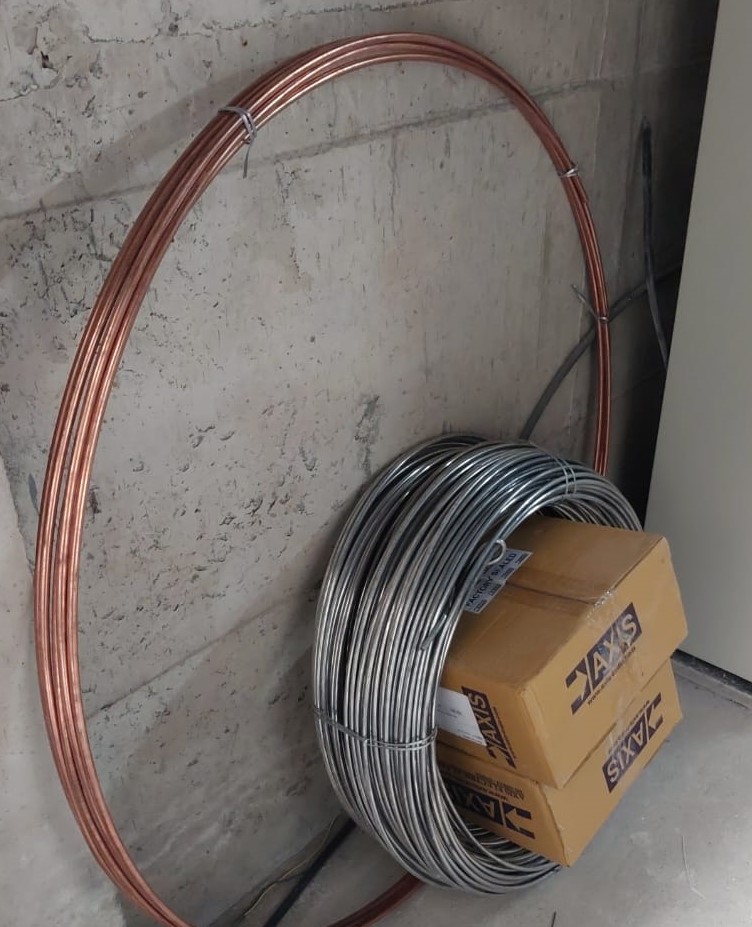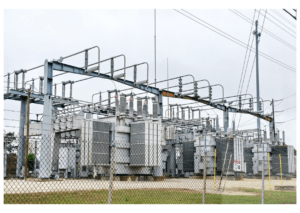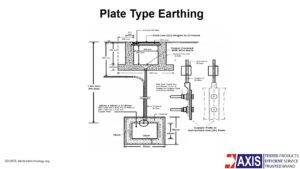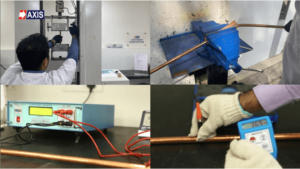An electrical conductor is a material that allows electricity to flow through it. However choosing between “copper-clad steel conductors” and “pure copper conductors” for lightning protection can be confusing, as both serve similar purposes. But, selecting the wrong one can make a significant difference.
Conductors can generally be classified by the metals they are made from, which depends on the intended purpose. In this blog, we will discuss two widely used conductors: copper-clad steel conductors and pure copper conductors. Additionally, there are various other conductors available in the market, including:
-
- Copper-Clad Steel
- Copper
- High Strength Alloys
- Stainless Steel
- Bare Copper
- Tinned Copper
- Silver Coated Copper
- Nickel-Coated Copper
A) Copper-Clad Steel Conductors
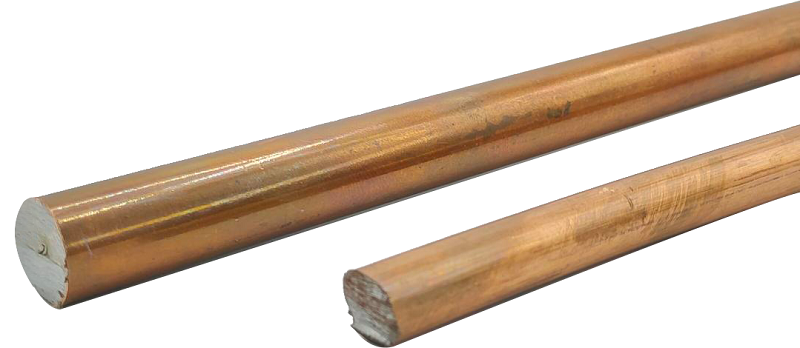
Copper-clad steel conductors, also known as copper-covered steel conductors, are composite material conductors. They consist of a uniform low, medium, or high carbon steel core surrounded by a thick layer of copper. The inner carbon steel core gives the conductor its high tensile strength, while the outer copper cladding provides electrical conductivity. In simple terms, this conductor has a steel core that grants it strength and a copper layer on the outside that ensures electrical conductivity.
Manufacturing of Copper-Clad Steel Conductors

The production of copper-clad steel conductors begins with a mild steel conductor, which undergoes a series of processes to enhance its physical properties and surface quality. Initially, the conductor is peeled to remove imperfections, straightened and turned for uniformity, and finally polished to achieve a smooth finish.
Next, the conductor enters the electroplating stage, where it is coated with oxygen-free copper at high temperatures, approximately 25-30 degrees Celsius. Following this, the conductor is subjected to hot-dipping in an oxygen-free copper-clad steel bath, maintained at approximately 45-50 degrees Celsius, ensuring a uniform coating.
After the hot-dipping process, the conductor is immediately cooled with water to strengthen the copper layer. To further enhance the conductor, it undergoes cold rolling, allowing for customization of shape and size according to specific needs. If necessary, the conductor then undergoes annealing—a heat treatment in nitrogen gas to improve its ductility and relieve internal stresses. This is the process by which a copper-clad steel conductor is manufactured.
Applications Copper-Clad Steel Conductors
Copper-clad steel conductors are widely used in grounding, i.e. connection of earthing rods to metallic structures, plates, and grid meshes, in power installations, substations, and for lightning arresters. Copper-clad steel conductors are also used for power transmission and radio frequency (RF) transmission lines.
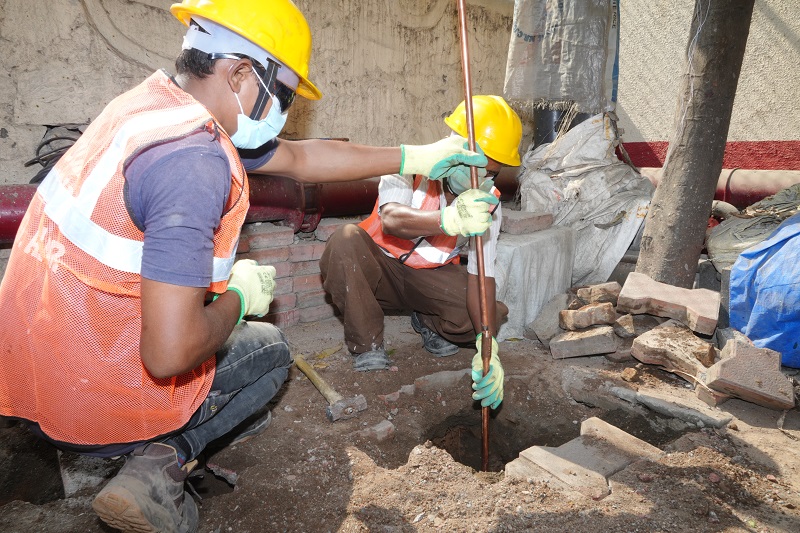
Advantages of Copper-Clad Steel Conductors
- During the process of bonding copper and steel, the coating is created on the Copper-clad steel conductors to protect the wire from breakage and corrosion. This also gives them about 43% higher break-load capacity than Pure Copper.
- Due to its corrosion resistance, the wire has lasting durability and longevity, reducing maintenance costs.
- Copper-clad steel conductors are about 10% lighter than Copper ones, therefore, their transportation costs are less and they are easier to handle during their installation and maintenance.
- In Copper-clad steel conductors, the outer copper layer has a lower impedance than that of the inner steel core. So when these conductors are used in Radio Frequency transmission lines, the ‘skin effect’ at high frequency encounters low impedance in the copper cladding, which is equivalent to that of a solid copper conductor.
- The tensile strength of Copper-clad steel conductors is greater than that of Pure Copper. Therefore with Copper-clad steel, the span lengths can be greater as compared to the span lengths achieved with pure copper ones.
- Copper-clad steel conductors can be used in coaxial cables thereby allowing higher impedance and smaller cable diameter than by using Copper Conductors of similar strength.
- In Copper-clad steel conductors, the amount of the more expensive copper is lesser than the amount of steel, and the two metals (i.e. copper and steel) cannot be separated easily. Therefore, this has little scrap value and discourages theft. Copper-clad steel conductors exhibit lower impedance to the ground as compared to pure copper, thus providing better protection to lines and equipment.
Talk to our Engineers!
B) Copper Conductors
Pure copper conductors are made a bit differently. They are produced by pushing pure copper ingots through an extrusion machine. This machine forces the copper through several moulds in a row to achieve the right size and shape for the conductor.
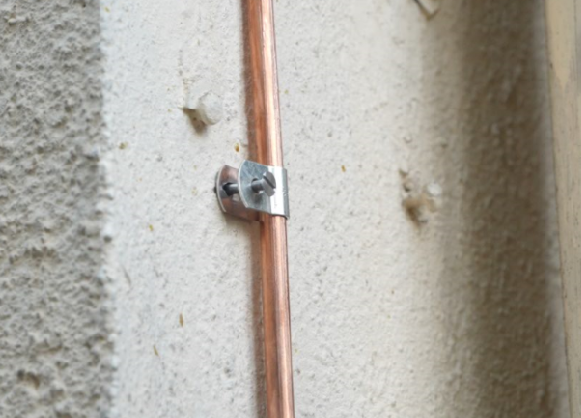
Where are they used?
They are used in power generation, power transmission, power distribution, telecommunications, electronics circuitry, and several types of electrical equipment. They are found to be ideal in permanent applications where the conductors, cables, or wires are unlikely to be replaced or changed (e.g. concealed wiring inside walls). Also, Copper Conductors in the form of cables find ideal use in signal transmission over long distances since minimal current is required to drive the signals on account of the high conductivity of copper (conductors). They excel in transmitting high levels of data over these distances – and minimal current is necessary to push signals all the way through.
Advantages of Copper Conductors
- They possess very high conductivity, much higher than any of the other conventional conductors.
- Copper exhibits durability and flexibility, which are the two big benefits of using them. The conductors can be easily bent back and forth, and are easy to form and shape. Solid copper as a conductor is usually preferred for longer cables.
- These conductors have better bend radius and can retain better signal strengths over long distances.
- They are most suited for permanent applications, such as concealed cabling inside walls, and other applications where the cables are not likely to be changed.
- The expected lifespan of copper is 100 + years.
Which conductor do you need?
Your choice should match your needs. For Earthing and Lightning Protection, copper-clad steel is the more cost-effective option. To illustrate the cost difference, if 1 meter of Copper Bonded Steel Conductor costs you X amount, the same length of Pure Copper will cost about 3 to 4X.
However, both conductors do an excellent job of protecting your building from lightning strikes. They safely channel it to the ground without causing dangerous temperature increases, that could damage your structure.
We hope you now have a clear idea about all the 2 conductors. At Axis, we have a team of 40+ engineers who are here to help you in designing, installing and testing your Grounding and lightning Protection Systems. Our products have been used in substations, data centres, factories and even in everyday residential and commercial buildings.
Thank you for reading the blog, Axis is a leading manufacturer and supplier of AB Cable Accessories and other Electrical Components to over 80+ Countries. To get a quote or to talk to our industry expert visit our contact us section. You can also watch our videos by our experts – click here.

